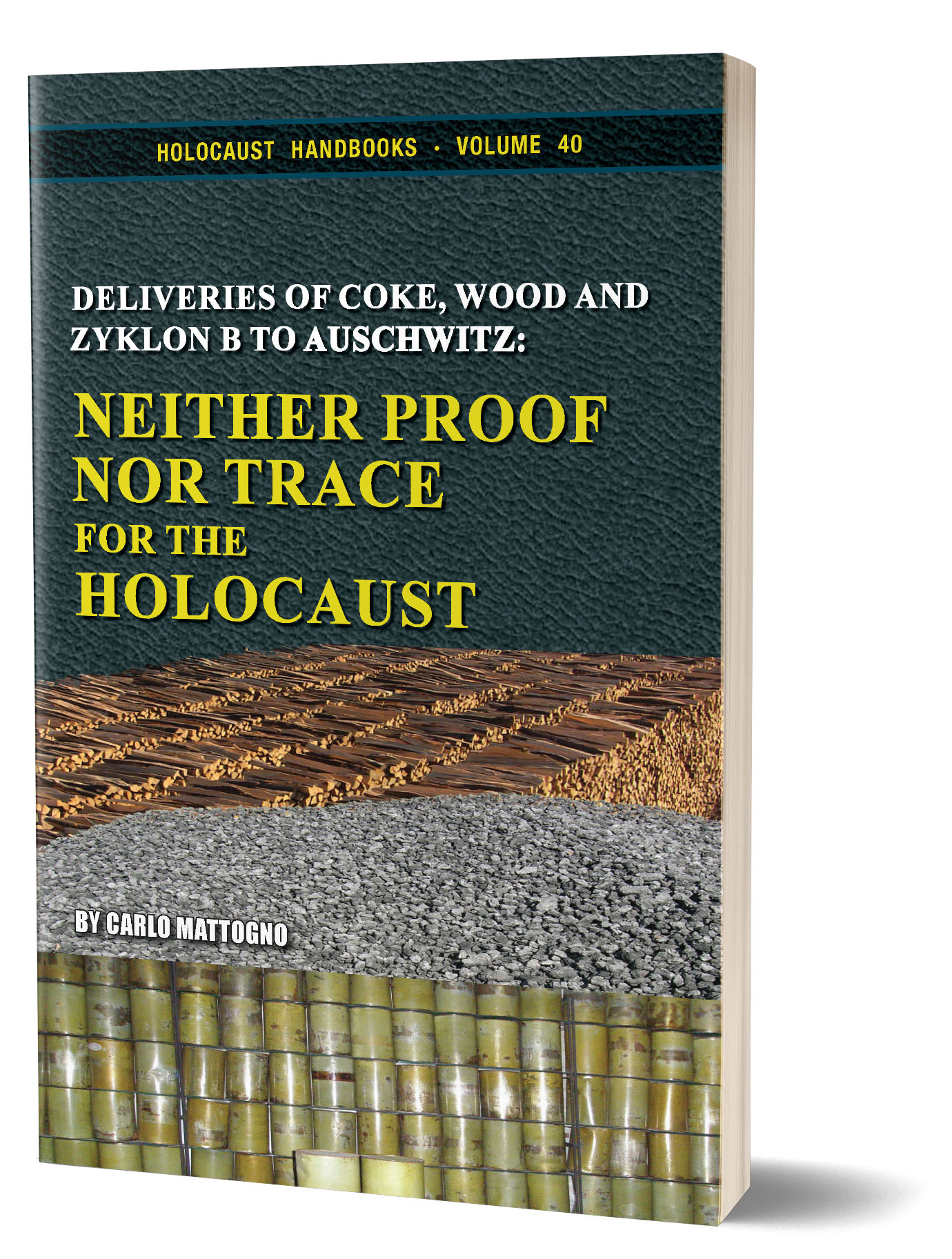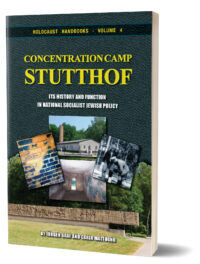Holocaust Handbook Volume: 40
From: £0.00
Researchers from the Auschwitz Museum tried to prove the reality of mass extermination by pointing to documents about deliveries of wood and coke as well as Zyklon B to the Auschwitz Camp. If put into the actual historical and technical context, however, as is done by this study, these documents prove the exact opposite of what those orthodox researchers claim.
Description
In order to prove that mass exterminations in gas chambers occurred at the infamous Auschwitz Camp, mainstream historians must rely almost exclusively on eyewitness accounts. They also adduce a few documents with ambiguous contents which they take out of their historical and documental context in order to impute a homicidal meaning to them which they don’t have.
After revisionist scholars pointed out this fact, and also established the highly dubious nature of these witness accounts in numerous studies, a researcher from the Polish Auschwitz Museum, Piotr Setkiewicz, tried a different approach to prove the raison d’être of his employer: In a lengthy paper, he points to documents about deliveries of firewood and coke as well as the pesticide Zyklon B to the Auschwitz Camp. The deliveries and consumption of wood and coke allegedly can be explained only by massive cremation figures compatible only with a large-scale killing program. But to come to this conclusion, ridiculously low average amounts of coke required for the cremation of a corpse in a cremation furnace have to be assumed, and even lower average amounts of wood for the burning of corpses on outdoor pyres. Neither of these amounts is even remotely physically possible. Furthermore, one has to ignore the fact that the wood and coke supplied to the camp also was used to heat hundreds of inmate housing units, in addition to camp administration buildings and SS accommodations, and also to fire the many kitchen stoves and the boiler units in various disinfestation and shower facilities.
The supplies of the pest-control agent Zyklon B presumably point to homicidal activities as well, if we are to believe Setkiewicz. But when considering the total amount of inmate barracks in frequent need of pest control, and the various disinfestation facilities constantly consuming this product to fight lice and fleas in garments and bedclothes, nothing is left for the claim that there is anything sinister about the quantities of Zyklon B the Auschwitz Camp received.
As the present study shows, if realistic amounts of coke and wood needed for recorded (non-homicidal) cremation purposes are assumed, and considering the camp’s need for pest-control agents to fight the various epidemics which ravaged the camp throughout ist history, the documented supplies of coke, wood and Zyklon B actually prove the opposite of what Setkiewicz claims: Not only is there neither trace nor proof for mass murder contained in them, but they actually prove that the mass-extermination and mass-cremation claims cannot be true.
Additional information
| Weight | 0.7497 lbs |
|---|---|
| Dimensions | 9 × 6 × 0.46 in |
| Format | Hardcover, Paperback, eBook (PDF download), eBook (ePub download) |





